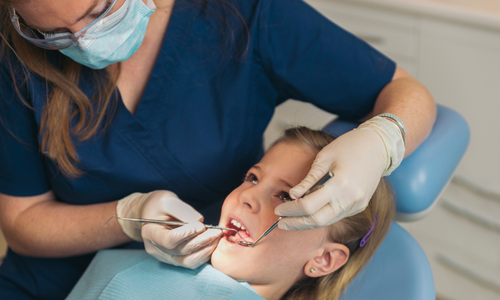Although baby teeth may seem temporary, they play a crucial role in a child’s nutrition, speech development, and the proper alignment of permanent teeth. When deep cavities or trauma damage the nerve tissue inside a primary tooth, a specialized root canal treatment can be performed to save the tooth instead of extracting it. This procedure involves removing the infected pulp and filling the space with a suitable dental material.
When Is Root Canal Treatment Needed?
-
Pain caused by deep cavities
-
Tooth fractures due to trauma
-
Presence of infection, abscess, or swelling
-
Nighttime toothaches that disturb sleep
-
Tooth discoloration or darkening
These symptoms may indicate damage to the pulp tissue and the need for root canal treatment.
How Is Root Canal Treatment Performed on Baby Teeth?
-
Diagnosis and X-ray: The depth of the decay or infection is evaluated.
-
Local Anesthesia: Applied to keep the child comfortable during the procedure.
-
Cleaning the Canal: Infected nerve tissue inside the tooth is carefully removed.
-
Filling: The empty space is filled with a biocompatible material suitable for primary teeth.
-
Final Restoration: A filling or pediatric crown is placed to restore chewing function.
Post-Treatment Care
-
Chewing on the treated tooth should be minimized for the first few days.
-
Good oral hygiene must be maintained.
-
Regular dental check-ups are important for monitoring healing.
-
If necessary, a child-friendly crown may be placed to protect the tooth until it naturally falls out.
This treatment helps maintain the primary tooth’s function until it is time for the permanent tooth to erupt, ensuring healthy oral development.







.png)
